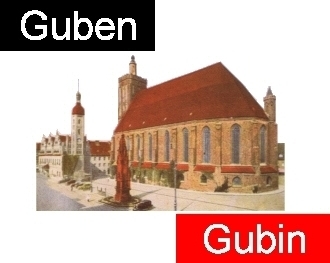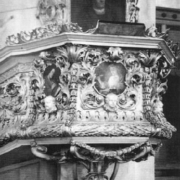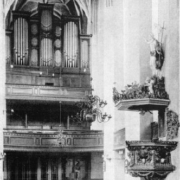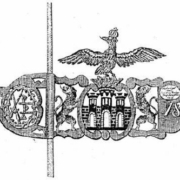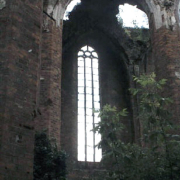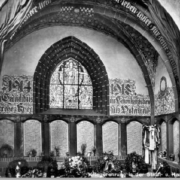THE DEVELOPMENT OF THE CITY AND MAIN CHURCH CAN BE DIVIDED INTO TWO PHASES.

The pulpit
The first phase is the predecessor of the present church. This was smaller and extended from the eastern tip to where the pulpit had been since 1581. It had seven columns and a small tower with a bell for mass. In his „Zeittafel zur Geschichte der Stadt Guben“ (Chronological Table on the History of the City of Guben), Adolf Tschirch gives the years 1190-1240 as the time when the church was built. In documents, the church is also referred to as the parish church or town parish church.

The organ
The second phase began in 1519 with the extension of the church at its western end. First, the building was enlarged by eight pillars. The following year, the foundations were laid for the square tower. The roof was added by 1523. The result was a three-nave Gothic hall church. Then there was a break for 12 years. It was not until 1535 that work on the tower was resumed. Another 13 years passed before the church gable was completed in 1548. The bells were finally placed in the tower in 1554. The oldest Guben town history by Johann Christian Loocke from 1803 tells of 5 bells that were present in the town and main church. In 1555, the spire was completed. In 1557, the tower knob could finally be put on. This completed the outer construction of the church.

The altar
Its interior expansion began in 1559 with the continuation of the vaulting. This only took a year. In 1562, the western part of the church building received windows. As early as 1574, the roof had to be re-roofed. The installation of the galleries was begun in 1580 and finished in 1594. The church now had 1768 seats, about a third of which were rented out. The interior decoration of the town and main church was completed in 1594.
In 1788, the Augustinian monk Preuss from Sagan attached a lightning conductor to the tower.
At the beginning of the 1840s, a comprehensive renovation of the church had become inevitable, as it had been neglected for more than forty years and no longer presented a beautiful sight. The originally white walls were dusty and dirty, the paintings unrecognisable, the pipes of the organ acidified, the keyboard worn out, the wood worm-eaten and the windows partially broken. In this context, the old baptismal font was also removed from the old church.
On the south side, a monument to the Guben mayor and poet Johann Frank was erected in 1877 on the occasion of the 200th anniversary of his death, at the suggestion of the teacher and local historian Dr. Hugo Jentsch.
In the second half of 1896, the church received central heating.
In the autumn of 1921, an electric hour chime was installed, freeing the doorman from having to ring the bells by hand.
In 1925, the church received a new electric lighting system, replacing the gas lighting that had been in use since 1884.
In April 1927, the war memorial for the soldiers who died in the First World War was inaugurated in the niche to the right of the altar.
In the summer of 1939, the town and main church received a new roof with skylights and a new cross at the hip point above the choir.
The last service took place on New Year’s Day 1945.
WIR SUCHEN STÄNDIG
Fotos, Negative, Zeichnungen, Urkunden, Dokumente, Filme, Zeitzeugen, Unterstützer, Aktive

